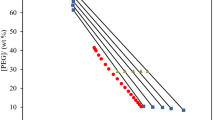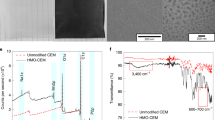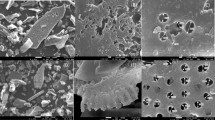Abstract
SOME long-chain alkyl phosphoric acids and long-chain alkylamines can be used as liquid ion-exchangers in a process analogous both to conventional ion-exchange with solid resins1 and liquid-liquid extraction. The liquid ion-exchanger is dissolved in a water-immiscible liquid and partitioned with an aqueous solution of the ions to be separated. Extensive use has been made of this technique in the separation and recovery of inorganic cations, particularly heavy metal ions such as uranium.
This is a preview of subscription content, access via your institution
Access options
Subscribe to this journal
Receive 51 print issues and online access
$199.00 per year
only $3.90 per issue
Buy this article
- Purchase on Springer Link
- Instant access to full article PDF
Prices may be subject to local taxes which are calculated during checkout
Similar content being viewed by others
References
Kunin, R., Angewandte Chemie, Intern. Ed., 1, 149 (1962).
Khim, J. X., Biochemistry, 2, 401 (1963).
Dolinsky, M., and Stein, C., J. Assoc. Official Agric. Chemists, 45, 767 (1962).
Vogel, Textbook of Quantitative Inorganic Analysis, second ed., 869 (1951).
Lewis, G. P., Brit. J. Pharmacol., 9, 488 (1954).
Clarke, J., and Perrin, D. D., Quart. Rev. Chem. Soc., 18, 295 (1964).
Author information
Authors and Affiliations
Rights and permissions
About this article
Cite this article
TEMPLE, D., GILLESPIE, R. Liquid Ion-exchange Extraction of some Physiologically Active Amines. Nature 209, 714–715 (1966). https://doi.org/10.1038/209714a0
Issue Date:
DOI: https://doi.org/10.1038/209714a0
Comments
By submitting a comment you agree to abide by our Terms and Community Guidelines. If you find something abusive or that does not comply with our terms or guidelines please flag it as inappropriate.



